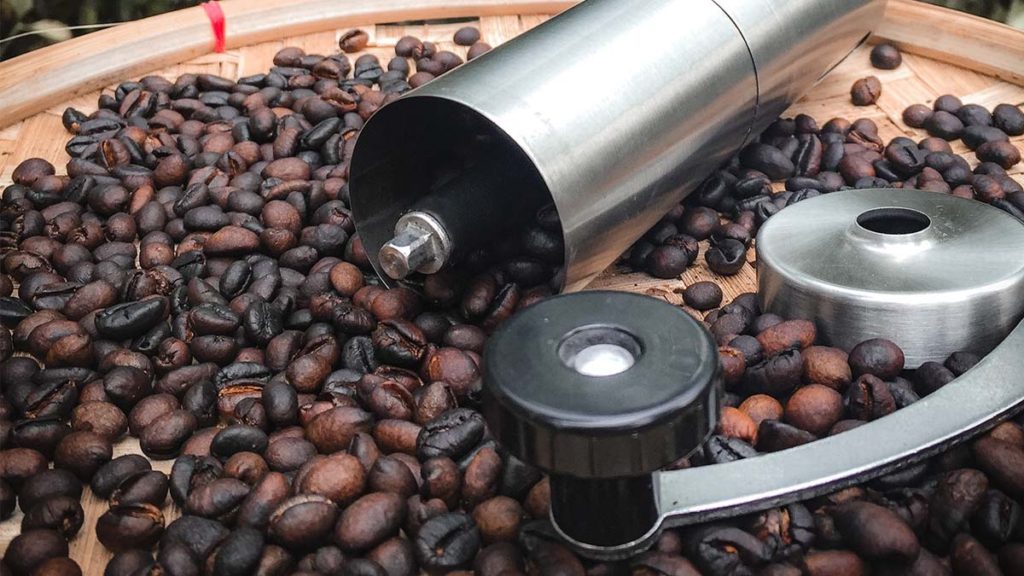Traditional way of making Batangas coffee is very easy to do. Just follow these 8 easy steps to make you feel like a local brewing your own cup of coffee.
Nowadays, there are a lot of coffee to choose from and most of them are instant coffee. With the convenience and variety of flavors, no wonder why it is very in demand for coffee lovers.
But do you know that you can also brew your own coffee at home?
Well, if you have a visitor in your house might as well give them a cup of coffee to start a conversation, and to make it special, try to make the local version of it.
Batangas is popular when you talk about coffee. In history, Batangas is exporting coffee to America. Philippines is one of the few countries that produces the four varieties of commercially-viable coffee: Arabica, Liberica (Barako), Excelsa and Robusta. Liberica or Barako coffee is the most popular one in Batangas. “Kapeng Barako” is the term you will hear when you talk about Batangas culture. Barako a tagalog word which means strong man and “kape” means coffee. Because of its strong taste, it got the name “kapeng barako.”
Now that you know a little bit of history, lets start to know the traditional way of making Batangas coffee.
How to: Traditional Way of Making Batangas Coffee
1. Picking of the Coffee Cherries
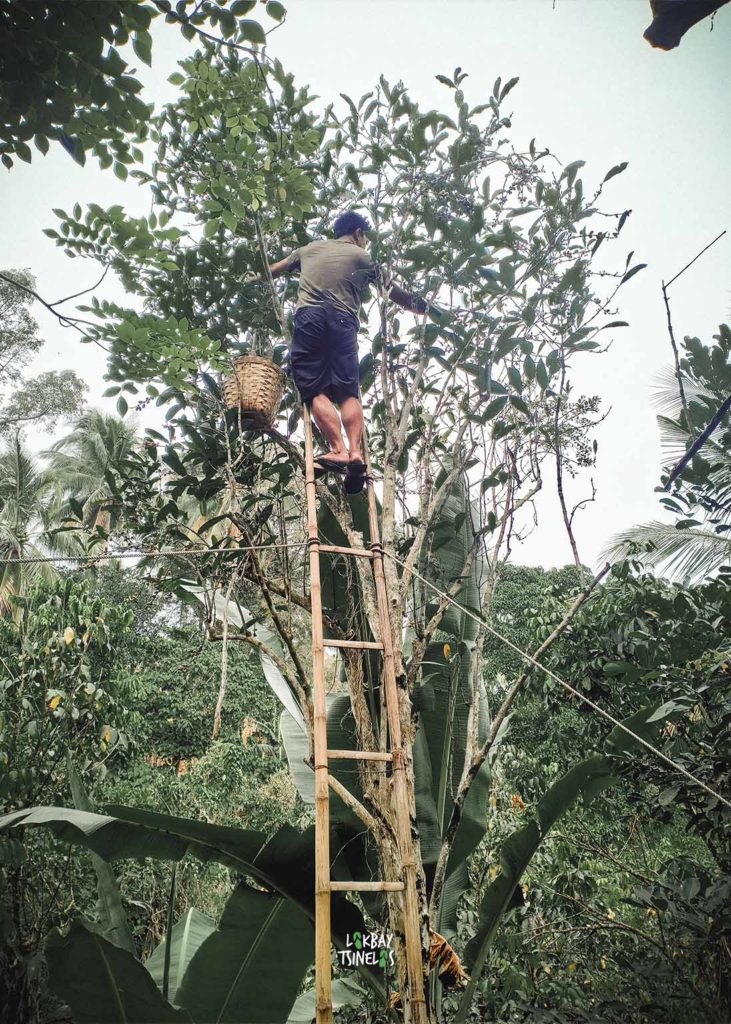
When you’re going to climb the coffee tree, it is a good practice to bring ladder. The tree is not always low, unlike in the coffee plantation. Most of the locals are not using air layering technique in their coffee tree. Aside from the beans they get, the branches are also used as firewood.
Using the ladder must have proper positioning. The ladder must be leaned properly on the tree. The rope is tied on both sides of the ladder. Each end is also tied on another tree to provide support. It should have a V-shaped form (see the picture above). This will give you proper balance and support while picking the coffee beans.
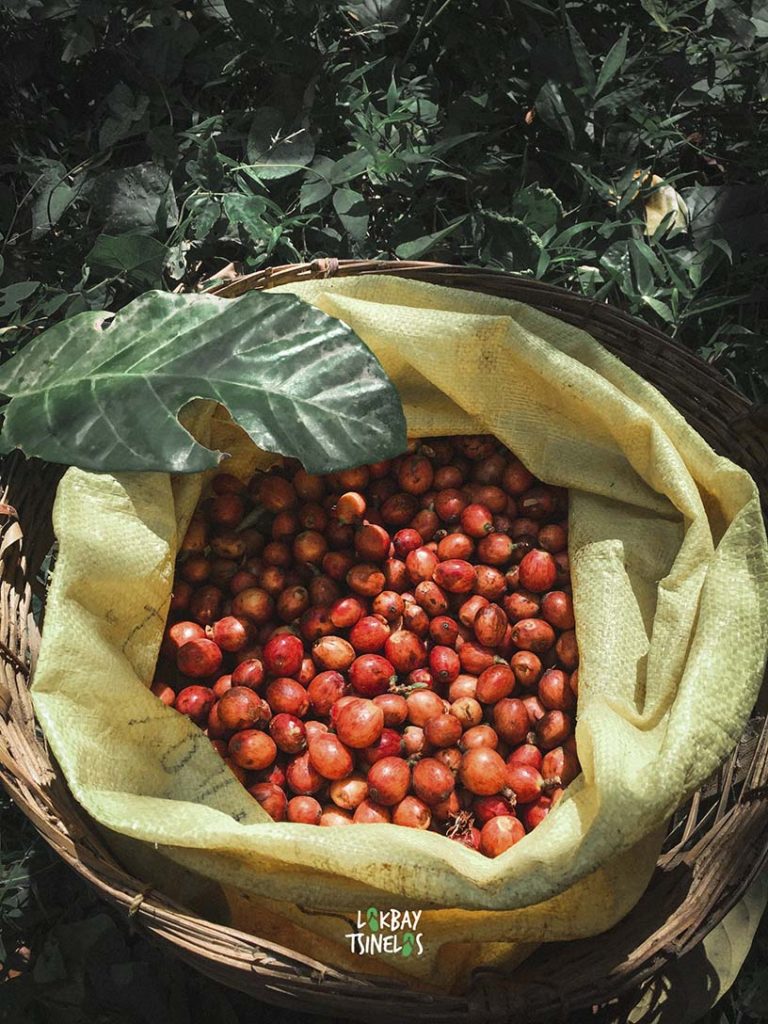
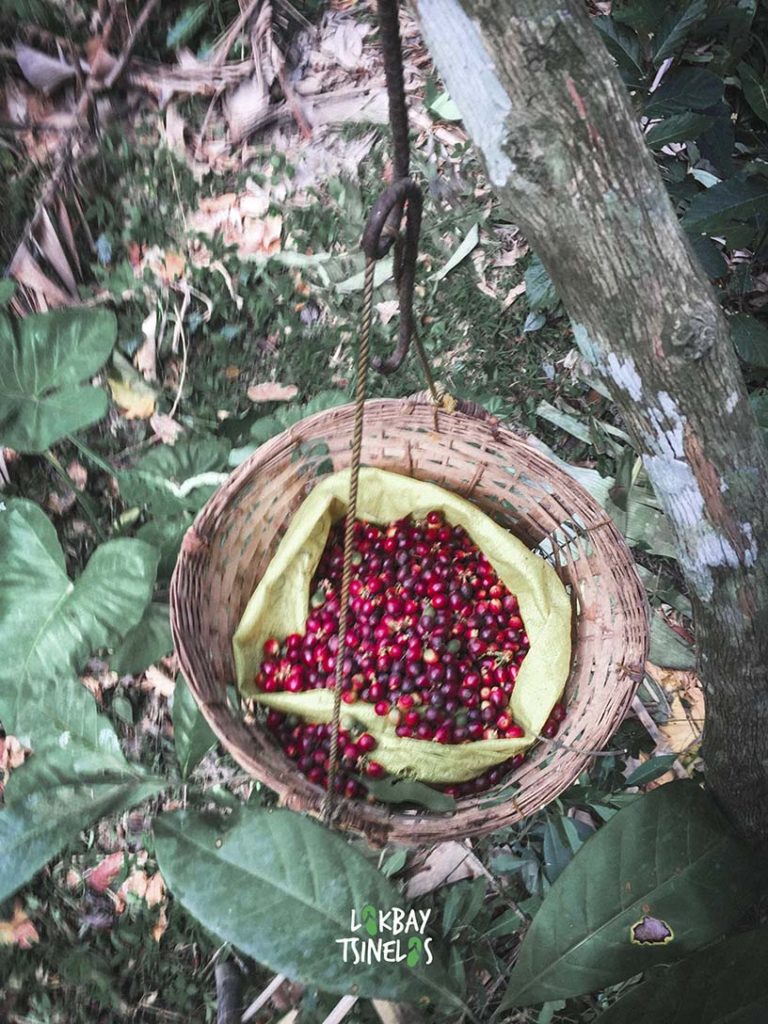
2. Extracting of the Coffee Beans
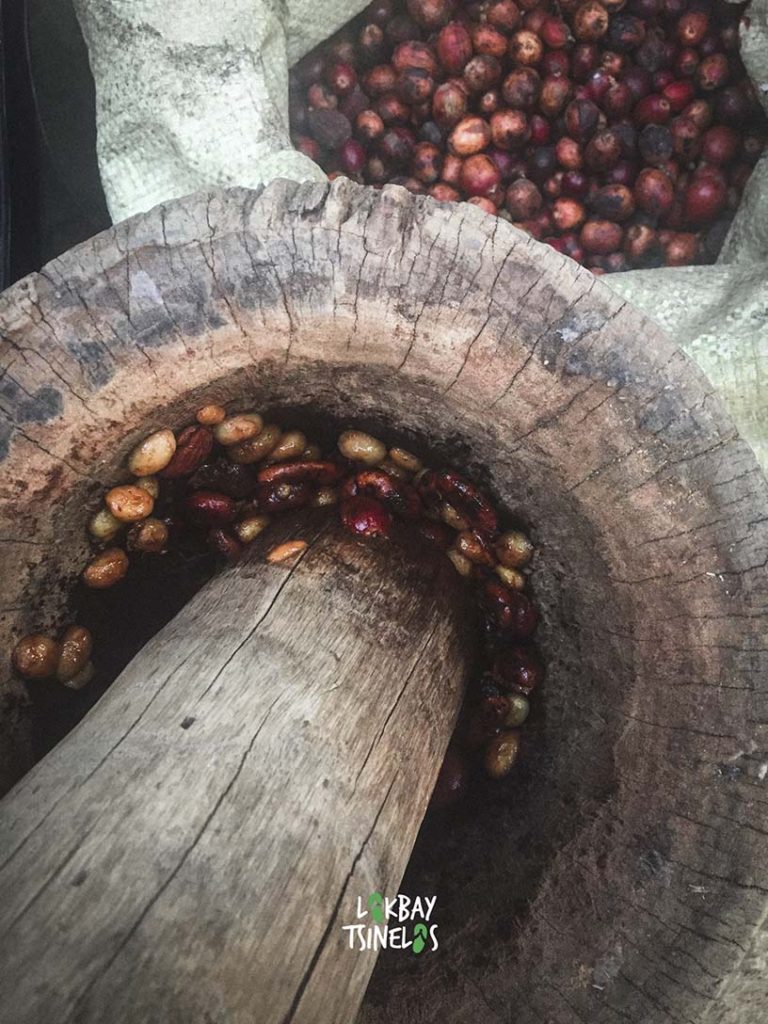
Using a wooden pounder, gently pound the coffee cherries to easily extract the beans. This is a traditional way of doing it, but if you don’t have the wooden pounder and what to do the same, a two pieces of wood would do.
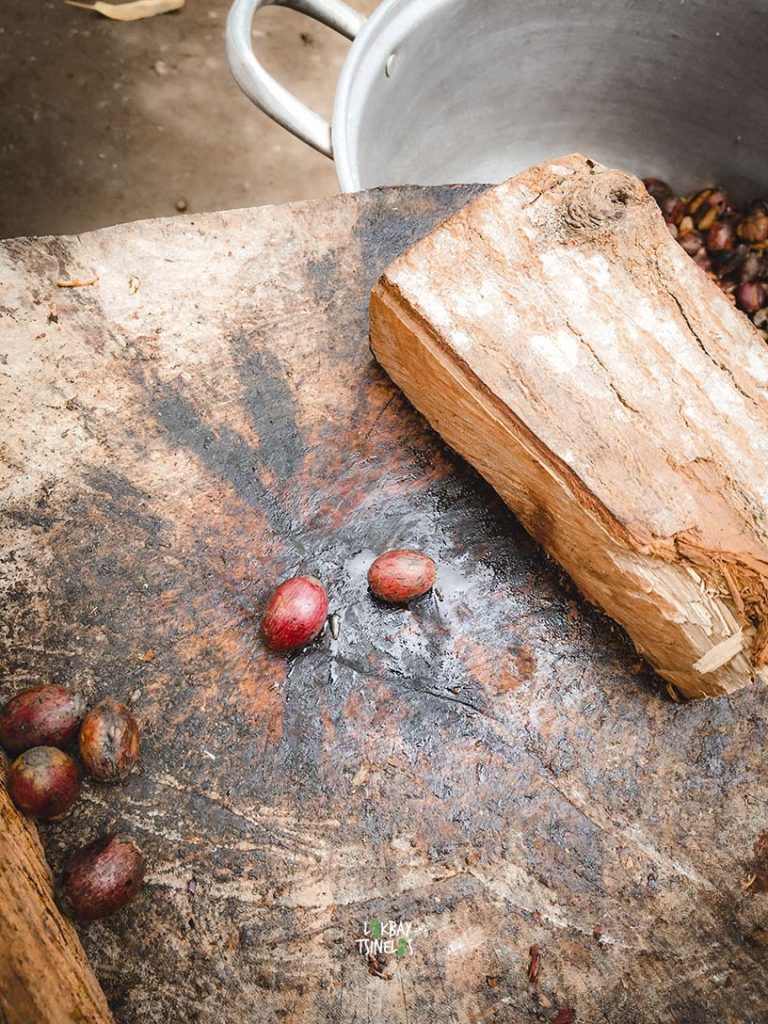
3. Washing of the Extracted Coffee Beans
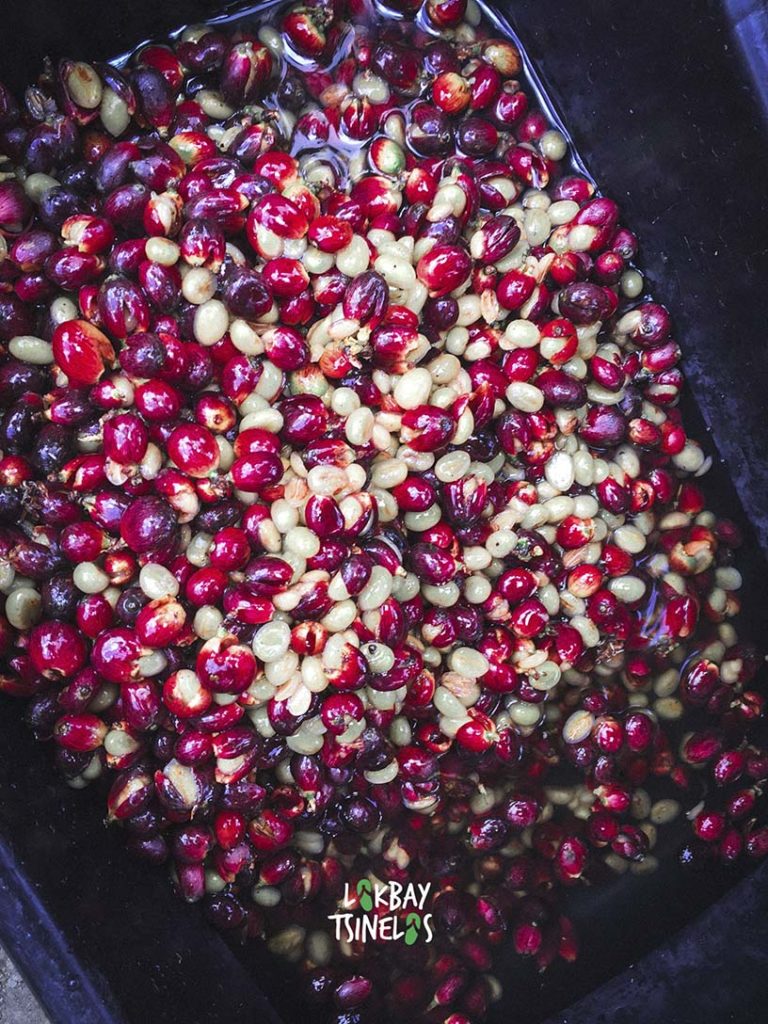
After the pounding process, manually separate the beans and the cherries’ skin. Soak it in water and one by one, remove the cherries’ skin.
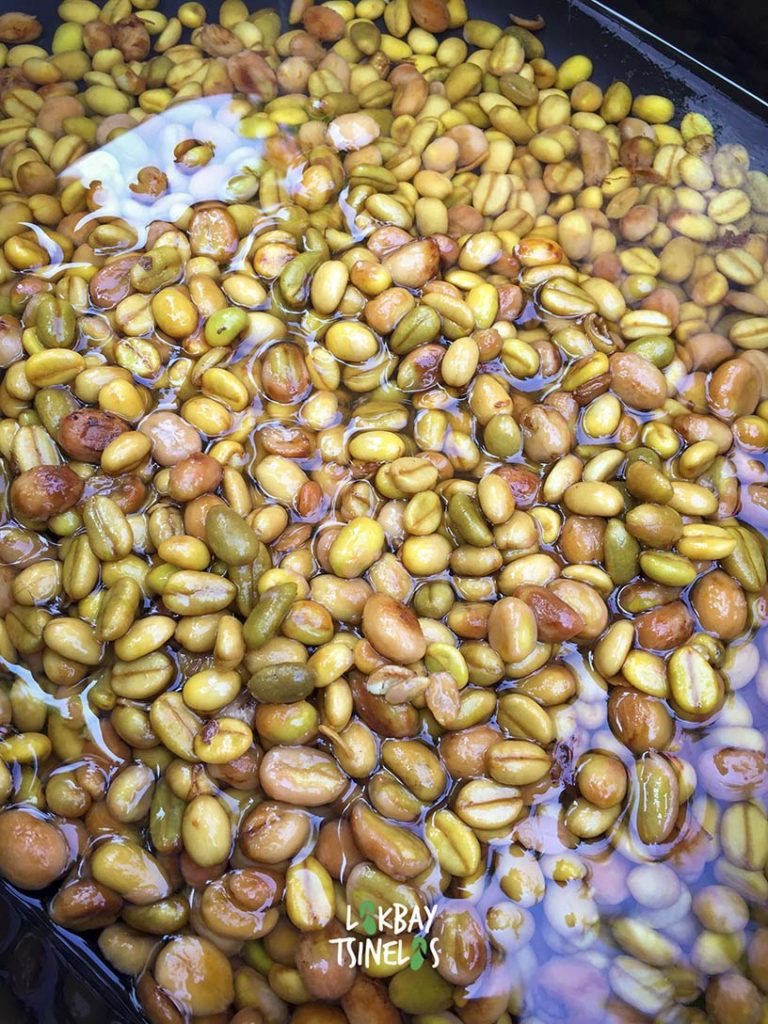
After the coffee beans is extracted, you need to wash it thoroughly to remove the “stickiness”. It will take longer for the beans to dry if the stickiness is not removed completely,. Once the texture becomes rough, it is now ready for sun-drying.
4. Sun-Drying of the Extracted Coffee Beans

It’s time to see the sun! Usually, it takes a week or two before it completely dries under the sun. So be patient, someday everything will fall perfectly on the right place, at the right time!
5. Extracting the Final Coffee Beans
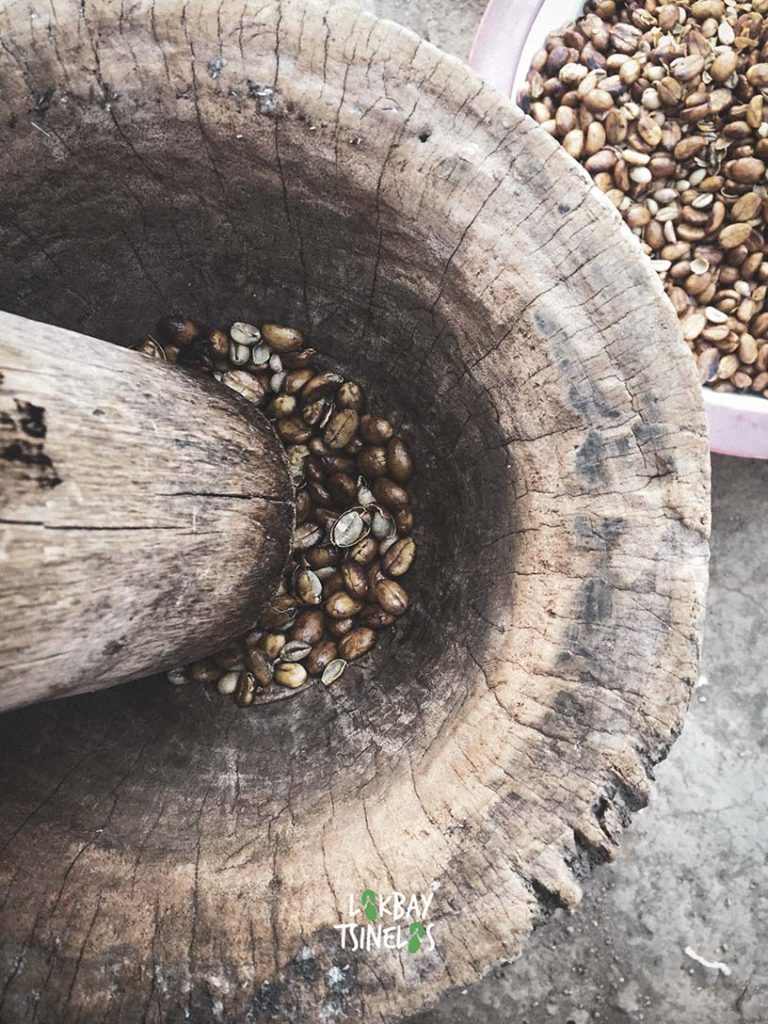
Alright! Here’s another round of pounding. Gently break the coffee bean shell using the wooden pounder. Make sure not to damage the coffee bean inside. Self-control is important! 😀
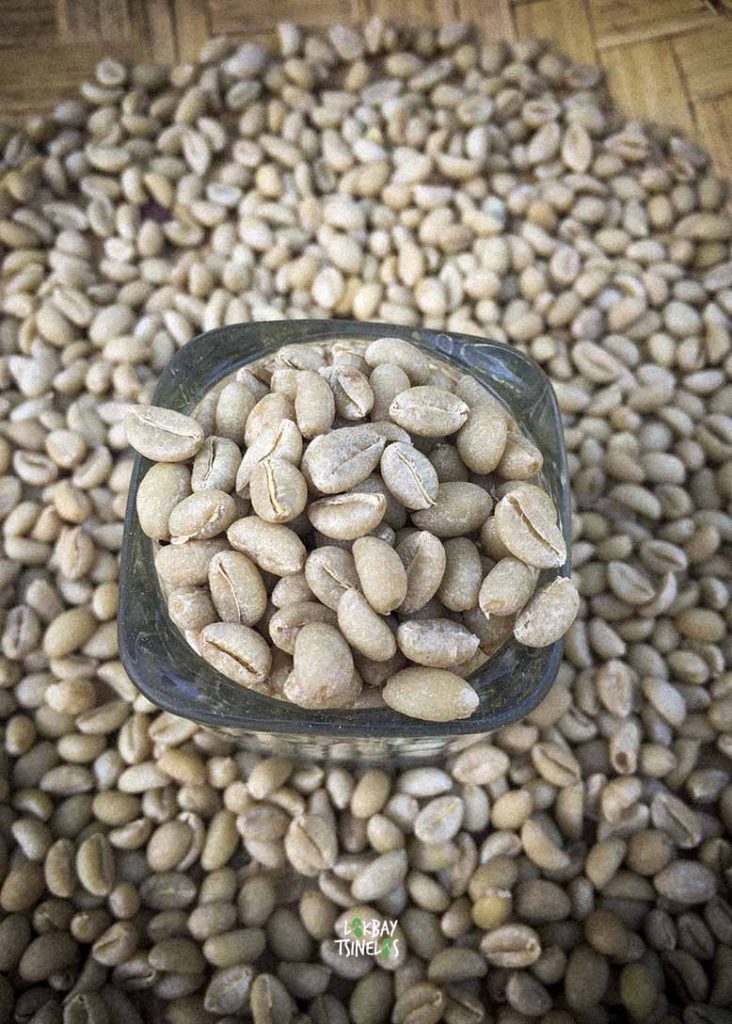
Above is the final extracted coffee beans after breaking the shell. It is separated piece by piece using bare hands. And that’s how traditional method goes, right?
After that, you have to dry it again under the sun for a week. The more dried it gets, the better.
6. Roasting of the Coffee Beans

Roast the coffee beans is using a pan and a firewood. Once you put the coffee beans in the pan, you should not stop from mixing it until it becomes dark brown or black, whichever you preferred.

You can lower the heat so that you can compensate on the mixing of the coffee beans. Lower heat means you can slowly mix the coffee beans.
7. Grinding of the Roasted Coffee Beans

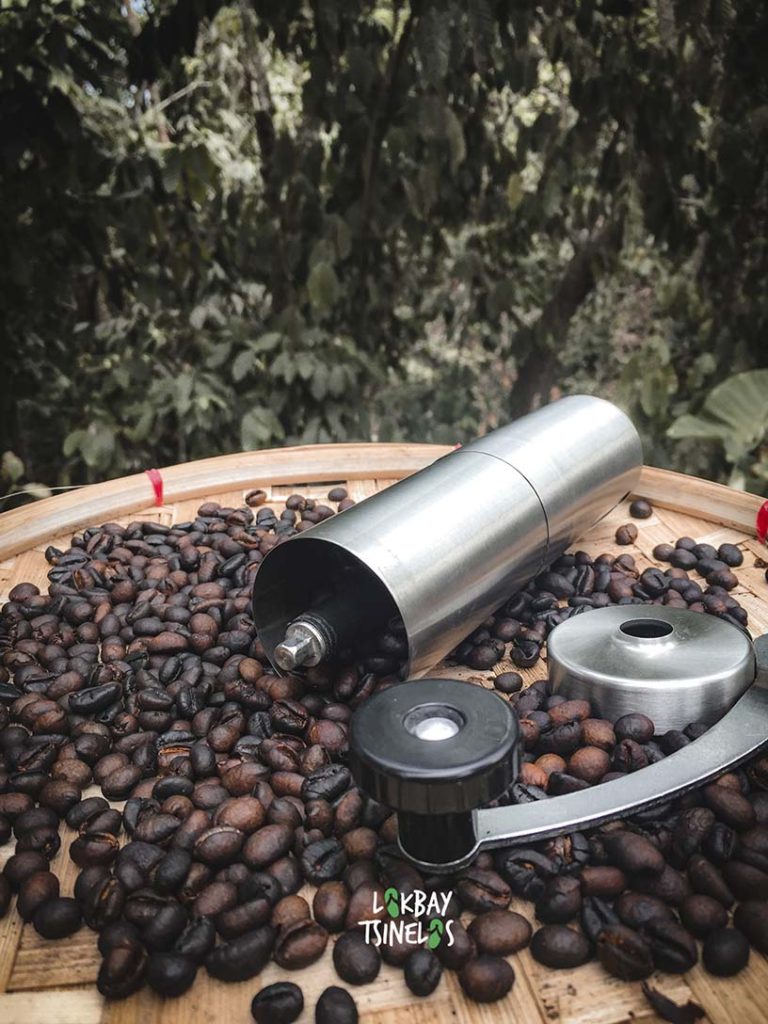
The traditional way of making Batangas coffee includes pounding to make a coffee powder. At present, manual coffee grinder is used to make effortless coffee powder. Others used electric coffee grinder or blender just to make coffee powder. So, it’s up to you which method you prefer.
8. Brewing
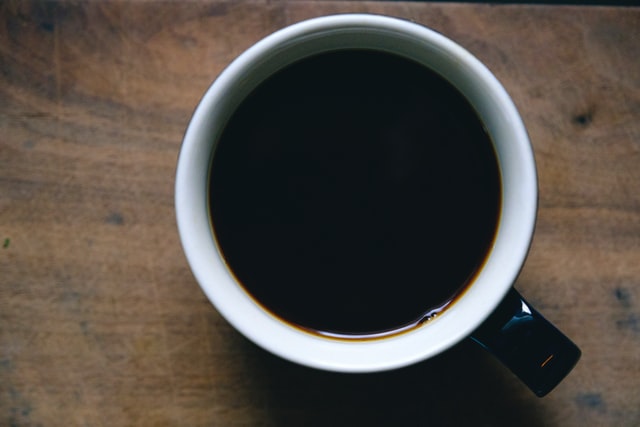
Brewing a coffee in Batangas is simple. Just boil water in a pot then add brown sugar. Make it boil for a few seconds then add your freshly grind coffee powder. Stir and settle it for 5 minutes for it to completely brew before straining it. Pour it in a cup as it is.
Enjoy!
And there you have it, the traditional way of making Batangas coffee from tree to cup. Who knows, it may lead you to a business start up.
Learning from the locals is always is good and sometimes even better than learning it from the books.
